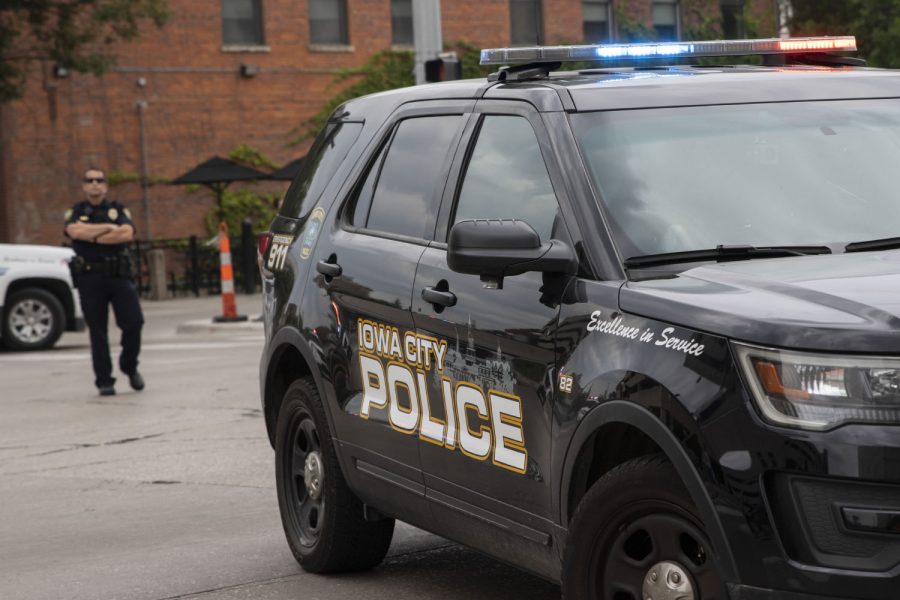Opinion | More funding for the police does not equal more safety
Increasing police funding is thought to be a means of bettering the department, however, there is no correlation between more funding and public safety.
Iowa City Police Department vehicles are seen on July 9, 2019.
September 29, 2020
More funding for law enforcement does not correlate to a safer community.
As The Daily Iowan previously reported, “Back the Blue” protestors recently held a march in favor of allocating more funds to the police department — however more funding does not correlate to a safer community.
The Urban Institute reports that local and state spending on police funding has remained consistent from 1977 to 2017, despite a drop in crime rates and a decrease in funding for K-12 education.
There is clearly a disparity on how money is being allocated to police departments in comparison to other programs, even here in Iowa City.
However, there is no clear correlation between increasing funding and programming for police with increased public safety.
According to an article by The Guardian, Minneapolis implemented a variety of different training, including implicit-bias training, body cameras, training on de-escalation, and more — yet none of it stopped the killing of George Floyd, because the system of policing is broken.
Policing disproportionately targets minority communities, perpetuating mass incarceration and systemic racism. According to the Des Moines Register, the American Civil Liberties Union reported that Black Iowans are 7.3 times more likely to be arrested on marijuana charges and 11 times more likely to be incarcerated than their white counterparts.
More arrests in these communities will not help solve the poverty that many communities find themselves to be trapped in, but that is all an increased police budget will lead to.
Furthermore, according to The Guardian, police have become increasingly militarized, through federal programs that give millions of dollars’ worth of military-grade weaponry to police departments. This weaponization pushes the toxic culture of aggressively over policing, which especially affects minority communities.
As stated in a Daily Iowan article, Iowa City protesters were met with tear gas and flash-bangs while advancing toward I-80 over the summer. The use of flash-bangs and tear gas on protestors has brought up a lot of necessary criticism and demands to restructure and reallocate funding for the police department in Iowa City. This type of action is a clear example of how the weaponization of police is toxic.
We have seen clearly across the country that the militarization of the police and feeble efforts to use various training methods as a means to better protect communities does not work. Instead more attention needs to be placed upon lifting up underprivileged minority communities.
Many of the calls directed to the police are reports of non-violent incidents. According to data referenced in an article by The Governing, in a study conducted of about 10 U.S. cities, around 99 percent of dispatches are non-violent reports.
These numbers further emphasize the need to focus on social programs as a means to elevate our communities, rather than increased policing.
Programs like social work, rehabilitation programs, education, affordable housing, and more, all have the potential to lift up underprivileged minority communities in more effective ways rather than turning to oppressive and violent policing in these spaces.
Historically, we have seen underprivileged minority communities be policed at higher rates than they have been protected. It is time we place our focus on building our communities rather than feeding more money into a broken system that disproportionately targets minority groups.
Columns reflect the opinions of the authors and are not necessarily those of the Editorial Board, The Daily Iowan, or other organizations in which the author may be involved.



